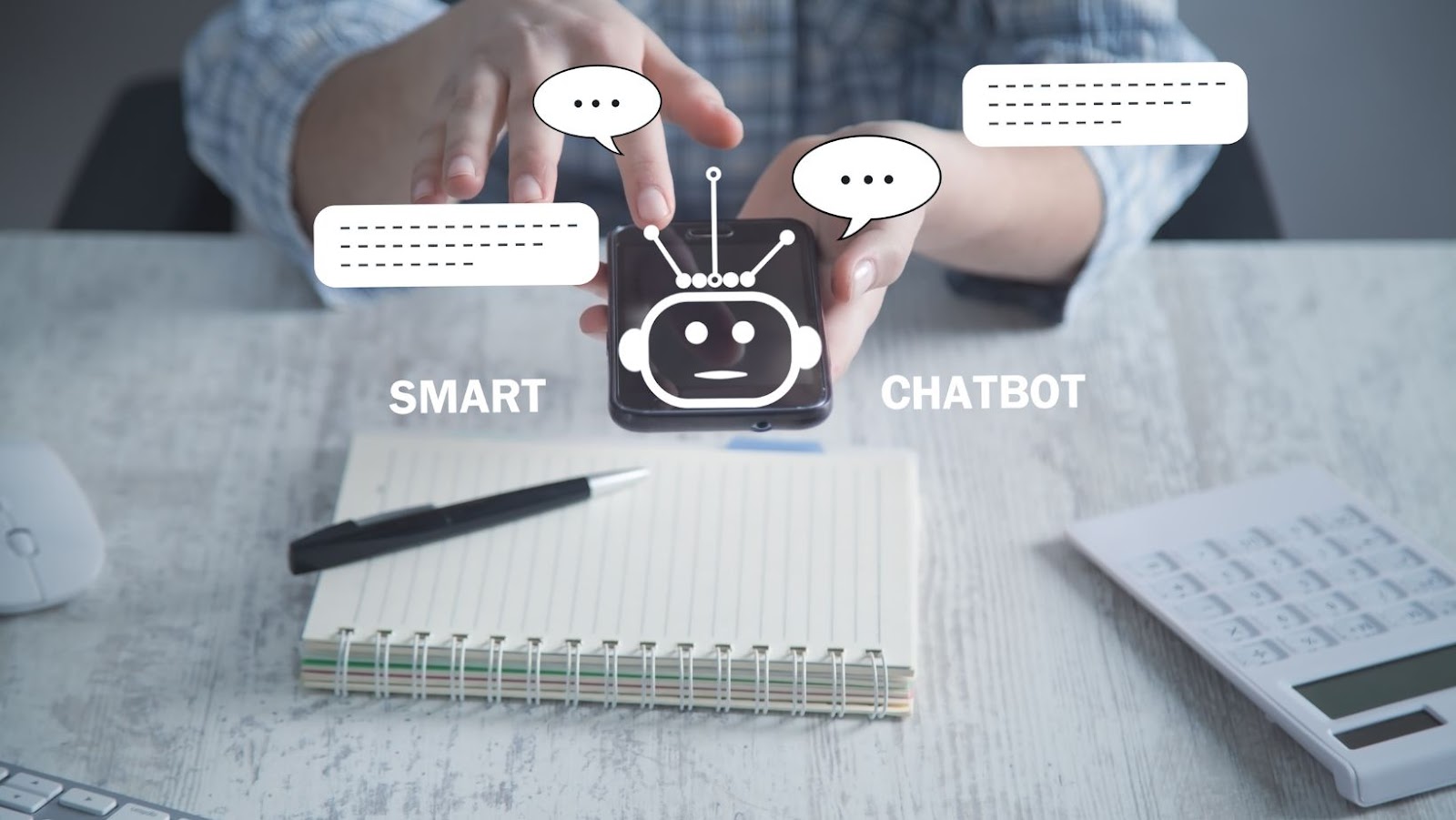Chatbots are computer programs designed to converse with humans in a natural language through text or speech. These bots are becoming increasingly sophisticated and are being used in a variety of applications.
But how does a chatbot work? Let’s explore how chatbots process information and how they can be used to provide customer service, automate mundane tasks, and more.
How Does Chatbot Work
Chatbots are computer programs designed to simulate conversation with human users via messaging applications, websites, or mobile apps. They use Natural Language Processing (NLP) and machine learning algorithms to understand and respond to user queries or commands.
Chatbots interact with users through a conversational interface that can be text-based or voice-activated. They can perform a variety of tasks, including providing customer support, booking travel arrangements, and making online purchases.
The future prospects for chatbots are promising as they continue to revolutionize the way businesses interact with their customers. Chatbots are becoming more advanced with the integration of Artificial Intelligence (AI) and are capable of understanding more complex queries and providing personalized recommendations. With the rise of messaging apps and the increasing demand for 24/7 customer support, chatbots are becoming an essential tool for businesses of all sizes.
Chatbots vs. Virtual Assistants
Chatbots and Virtual Assistants are both popular AI-based tools used for human-like communication, but they serve different purposes.
Chatbots are designed to automate and execute specific tasks or interactions, and they rely on pre-programmed scripts and natural language processing to simulate human-like conversations. Some chatbots use machine learning to improve their responses over time and adjust to new scenarios, but they typically have limited capabilities and can only handle specific types of queries.
Virtual Assistants, on the other hand, are designed to be more versatile and perform a wider variety of functions, such as scheduling appointments, sending emails, or providing general information. Virtual Assistants are more advanced than chatbots and can integrate with other systems and tools to provide a more comprehensive experience for the user.
Even though chatbots have limitations, they have a promising future in the realm of customer service, e-commerce, and many other fields. As AI technology advances, chatbots will become more robust and intelligent, allowing them to handle more complex queries and interactions.
The anatomy of a Chatbot
Chatbots are computer programs designed to simulate conversation with human users. The anatomy of a chatbot can be broken down into three main components:
1. User Interface: This is the part of the chatbot that interacts with the user, receiving input and providing output in the form of text, images, or speech.
2. Natural Language Processing (NLP): NLP is the technology that enables chatbots to understand and interpret human language, allowing them to provide accurate responses to user queries.
3. Backend System: The backend system is the brain of the chatbot, responsible for processing user input, retrieving relevant information, and generating responses.
Future prospects for chatbots are immense as they can be increasingly used in customer service and support, e-commerce, and healthcare. The benefits of chatbots include improved customer experience, 24/7 availability, reduced operational costs, and enhanced customer engagement. With the advancements in Artificial Intelligence (AI) and Machine Learning (ML), chatbots are evolving to provide more personalized and intuitive interactions.
Pro Tip: Businesses should consider adopting chatbots as part of their customer engagement strategy to deliver efficient and personalized support while reducing operational costs.
Current state of Chatbots
Chatbots have seen explosive growth in recent years with many applications in customer service, marketing, finance, and communication. With the growing use of natural language processing (NLP), machine learning, and artificial intelligence (AI) to create increasingly sophisticated chatbot AI, businesses and developers are able to customize the conversation for their specific needs.
In this article, we will discuss the current state of the chatbot industry and how it is revolutionizing customer service, marketing, and communication.
Advantages of using Chatbots
Chatbots have revolutionized the way businesses interact with their customers by providing a range of advantages, from 24/7 customer support to personalized engagement.
Here are some of the top advantages of using chatbots:
1. Improved Customer Service: Chatbots provide instantaneous customer support, they can answer queries and resolve complaints in real-time, which leads to better customer satisfaction rates.
2. Cost Savings: Chatbots can handle multiple requests simultaneously, reducing the need for human support staff, and the cost associated with them.
3. Increased Efficiency: Chatbots can execute tasks quickly and free up resources for other important tasks.
4. Personalization: Chatbots can learn about individual customers and personalize their interactions with them, creating a more engaging and human-like experience.
In the future, chatbots are expected to become even more sophisticated and capable of performing complex tasks. With advancements in AI, natural language processing, and machine learning, chatbots are set to revolutionize the way businesses interact with their customers. Pro tip: If you haven’t already, consider incorporating a chatbot into your business strategy to improve customer engagement and streamline your operations.
Challenges faced by Chatbots today
Even though chatbots are becoming increasingly popular, they still face some challenges that can hinder user experience and prevent wider adoption. One of the biggest challenges is answering complex and specific queries that are beyond their understanding. While they’re great at handling simple requests, chatbots often struggle with handling multi-step processes or nuanced questions. Additionally, there are instances where they’re unable to understand user intent or preference accurately, which can lead to unsatisfactory responses.
Moreover, the tone and language of a chatbot can come across as non-human, thereby reducing the empathy factor that many customers seek through human interaction. To tackle these challenges, there is a need for continued development and advancement of chatbot technology.
The future prospects for chatbots are promising as research is being carried out to improve natural language processing and machine learning capabilities. In the future, chatbots could provide customized support, offer more reliable solutions, and be better integrated with other technologies.
Examples of Chatbots in use today
Chatbots have become increasingly common in recent years and are being used to perform a wide range of tasks in various sectors. Let’s take a look at a few examples of chatbots currently in use:
1. Customer service: Many businesses are using chatbots to interact with customers, answer inquiries, and provide assistance.
2. Healthcare: Chatbots are being used in the healthcare sector to provide medical advice, monitor symptoms, and schedule appointments.
3. Banking: Banks are utilizing chatbots to help customers with account inquiries, money transfers, and other financial services.
4. E-commerce: Retailers are using chatbots to automate customer support, manage orders and returns, and improve the overall shopping experience.
The future of chatbots looks bright as more businesses adopt this technology to streamline their operations, enhance customer experiences and gain a competitive edge.
Pro tip – when using a chatbot, try to be as specific as possible with your requests to help the bot provide the most accurate responses.
The Future prospects of Chatbots
Chatbots are quickly becoming a popular choice for businesses who are looking for a cost-effective way to interact with customers. They are able to use Artificial Intelligence to answer questions, provide customer service and even process payments. This means that chatbots can be used in any industry from retail to healthcare.
In this article, let’s explore the future prospects of chatbots and how they might change the way businesses interact with customers.
Chatbots and Conversational AI
Chatbots and conversational AI technology have a bright future ahead, with vast potential for improving customer experience, increasing efficiency, and reducing operational costs for businesses.
Here are some future prospects for chatbots and conversational AI:
1. Enhanced personalization: Chatbots will be able to use advanced algorithms and machine learning to tailor conversations and offers to each individual customer’s needs and preferences.
2. Seamless integration with omnichannel platforms: Chatbots will integrate easily with social media, email, text messaging, and other platforms to provide a consistent and streamlined customer experience.
3. Improved data analysis: Chatbots will be able to process and analyze vast amounts of data to identify patterns and insights that can improve operational efficiency and customer experience.
4. Increased automation: Chatbots will take over more tasks that are currently handled by human personnel, such as scheduling meetings, answering frequently asked questions, and triaging support requests, freeing up time and resources for other uses.
With continued advancements in AI and machine learning, the potential for chatbots and conversational AI to transform various industries and change the way we interact with technology is unlimited.
Chatbots and Voice Assistants
Chatbots and voice assistants have already proven to be incredibly useful in many industries, and their future prospects are vast and varied. As AI technology becomes more advanced, so too will the capabilities of chatbots and voice assistants.
Here are some potential future prospects for chatbots:
- Increased personalization: Chatbots will be able to use data and AI to provide more personalized and relevant responses to users. This will provide a more human-like experience and improve user engagement.
- Enhanced functionality: Chatbots will become more sophisticated and able to perform more complex tasks, such as booking travel arrangements and making purchases.
- Integration with IoT devices: Chatbots will be able to control and interact with Internet of Things (IoT) devices, providing users with the ability to control their homes and other devices through voice commands.
Overall, the future is bright for chatbots and voice assistants, and we can expect even more exciting developments and applications in the years to come.
Chatbots and Customer Experience
The future prospects of chatbots are very promising, especially when it comes to enhancing customer experience. Chatbots are revolutionizing the way companies engage with their customers, by providing prompt and personalized responses to their queries and concerns, 24/7.
They are increasingly being integrated with various communication channels such as social media, messaging apps, and websites, to automate repetitive tasks and streamline customer support. Chatbots enable companies to create a seamless and efficient customer journey that results in higher customer satisfaction and loyalty.
Some of the future trends for chatbots include voice-enabled chatbots, advanced natural language processing capabilities, and the integration of chatbots with augmented reality (AR) and virtual reality (VR) technologies. As chatbots continue to evolve and become more sophisticated, they will undoubtedly become an indispensable part of the customer experience landscape.
Ethics and Security Concerns with Chatbots
With the rise of chatbot technology, many organizations are beginning to invest in the technology. While chatbots are beneficial in many ways, it is important to consider the ethical and security implications of using them.
In this section, we will explore the ethical and security concerns that come with using chatbots.
Data Privacy and Security issues
As we step into the era of artificial intelligence, the use of chatbots in our daily lives is increasing rapidly. However, with the convenience of chatbots comes the concern for data privacy and security.
Ethics and security concerns with chatbots are becoming a significant issue in the technology world. Businesses that use chatbots to interact with their customers must carefully handle the customer data and maintain adequate data privacy and security measures. The sensitive data collected from customers, including financial information and personal details, should be stored securely to avoid falling into the wrong hands.
The future seems bright for chatbots, but with their increasing implementation, it is also essential to ensure that these technologies are secure and ethical, following the proper regulations and laws. As technology advances, it is our responsibility to safeguard against risks that may arise due to our growing dependence on it.
Pro Tip: For secure and ethical use of chatbots, businesses must maintain stringent security measures, and users must remain vigilant against potential risks from data breach or fraud.
Bias in Chatbot programming
Bias in chatbot programming is a pressing ethical and security concern as chatbots become increasingly popular and pervasive in our daily interactions. This bias can arise from the data and algorithms used to train and develop chatbots and can have far-reaching implications for their efficacy and impact.
Some of the ways in which bias can manifest in chatbots include racial, gender, and socio-economic biases that influence the responses provided by the chatbot. For example, a chatbot developed and trained predominantly on data from one demographic may not be effective in engaging or providing accurate responses to individuals from other demographics.
To address these concerns, it is essential to prioritize diversity and inclusion in the development and training of chatbots to ensure they are more representative and equitable. It is equally important to ensure that chatbots are developed and programmed in a transparent manner such that the inputs and processes that inform their responses are visible and auditable.
The future prospects for chatbots are immense, and it is crucial to address these ethical and security concerns to ensure that they are designed and deployed responsibly, promoting positive social outcomes and benefits.
Pro tip: When developing chatbots, ensure that they are trained on data that represents the diversity of the population they are intended to serve. Also, make sure that chatbots are designed with transparency and auditability in mind.
Chatbots and the future of employment
Chatbots are becoming increasingly popular across multiple industries, providing cost-effective solutions for customer service, sales, and marketing. However, the rise of chatbots has raised concerns about ethics and security.
Although chatbots enable companies to provide 24/7 support to customers, they are not always equipped to handle complex issues or human emotions, leading to potential ethical concerns. Additionally, chatbots collect vast amounts of personal data, creating security risks and the potential for information breaches.
Nevertheless, the future prospects of chatbots remain promising. With advancements in machine learning and artificial intelligence, chatbots have the potential to become even more sophisticated in the future, addressing current limitations and ethical concerns. As such, chatbots will continue to transform the way businesses and customers interact with each other in the coming years.
How to develop Chatbots
Chatbots are increasingly becoming popular and it’s no surprise that more and more businesses are looking to integrate them into their operations. But how do you actually develop a chatbot?
This article will provide an overview of the steps necessary to build a chatbot and explore the benefits of using this type of technology.
Choosing the right platform for chatbot development
Choosing the right platform for chatbot development is crucial to create a successful and efficient chatbot. With the rise of chatbots, many platforms have emerged in recent years to aid in their development. The right platform will depend on your specific needs, level of technical expertise, integration requirements, and budget.
Here are some popular chatbot platforms and their features:
- Dialogflow: A Google-owned platform, Dialogflow offers voice and text-based chatbot development capabilities, machine learning algorithms, and natural language processing.
- Botpress: Open-source and highly customizable, Botpress offers multi-channel deployment, built-in analytics, and a drag-and-drop interface.
- Wit.ai: Acquired by Facebook, Wit.ai offers a user-friendly platform, built-in natural language processing, and integration with Facebook Messenger.
- Amazon Lex: AWS-powered, Amazon Lex offers text and voice chatbot development, automatic speech recognition, and integration with Amazon’s suite of tools.
It is essential to choose a platform that can provide the right tools to create an intelligent and context-aware chatbot that can fulfill the needs and requirements of the developer and the end-user.
Pro Tip: Assess the platform’s strengths and weaknesses and choose one that fits your specific needs to create a powerful and efficient chatbot.
Identifying use cases for Chatbots
Chatbots are becoming increasingly prevalent and the advantages they offer are vast. Businesses can use chatbots to save time, money and to provide excellent customer service. Here are some areas in which chatbots have proven successful:
Customer service – Chatbots provide instant support to customers and assist them with issues such as placing orders or making returns.
E-commerce – Chatbots can be programmed to provide customers with recommendations based on their purchase history or preferences.
Healthcare – Chatbots can be used to schedule appointments, remind patients to take their medication and answer basic medical questions.
HR – Chatbots can help companies to automate recruiting, employee onboarding, and benefits administration.
The development of chatbots is still in its early stages, but it is expected to grow exponentially in the future. We can expect to see chatbots used in many more industries and with advancements in technology, they will become more sophisticated, allowing them to offer even more complex solutions.
Pro tip: Chatbots are most effective when they are built with a specific goal in mind. Before beginning the development process, consider the need you want your chatbot to fulfill.
Best practices for Chatbot development and implementation
Developing and implementing chatbots can be a complex process, but following best practices can simplify it, making it more efficient and effective.
Here are some best practices for chatbot development and implementation:
- Define the chatbot goals and user requirements before starting.
- Choose an appropriate platform, taking into consideration your chatbot’s features and integration requirements.
- Design a user-friendly chatbot interaction flow based on your target audience’s needs.
- Use natural language processing (NLP) to make your chatbot more intelligent and interactive.
- Test and iterate your chatbot to improve its functionality.
- Provide users with an exit strategy, in case they need help from human customer support.
In terms of future prospects for chatbots, they are expected to become more advanced and prevalent in various industries, providing personalized customer service, language translation, and predictive analysis. Pro Tip: Keep abreast of the rapid advancements in NLP and AI to stay ahead of the competition in the chatbot development space.










